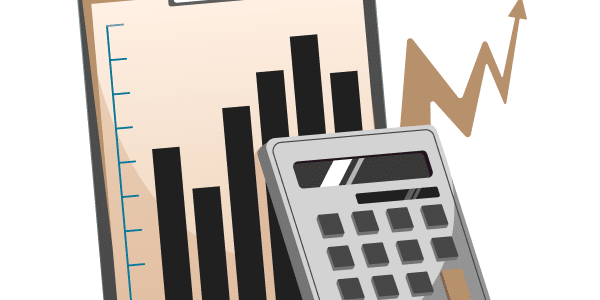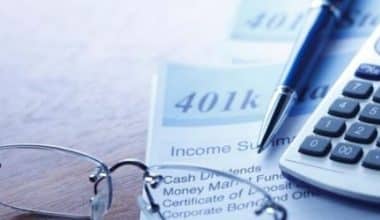APR, or Annual Percentage Rate, is a measure of the total cost of borrowing money over a year. It is an important metric that lenders use to inform consumers about the true cost of a loan, credit card, or other financial product. APR can be a bit confusing, so in this article, we’ll explore how it’s calculated on a loan, credit card, and mortgage and what factors can affect it.
The Basics of APR
APR is a percentage that represents the cost of borrowing money over a year. It includes not only the interest rate but also any fees or charges associated with the loan. When you’re comparing different loan offers, the APR is a useful tool because it gives you an apples-to-apples comparison of the total cost of each loan.
For example, imagine you’re considering two loans. One has an interest rate of 5%, but it comes with a $100 processing fee. The other has an interest rate of 6%, but there are no additional fees. At first glance, the 5% loan might seem like the better deal. However, when you factor in the $100 processing fee, the APR for that loan is actually higher than the 6% loan. By looking at the APR, you can easily see which loan is truly the better deal.
How is APR Calculated on a loan
Calculating APR involves a few different steps. First, the lender calculates the monthly interest rate by dividing the annual interest rate by 12. For example, if the annual interest rate is 12%, the monthly interest rate would be 1%.
Next, the lender adds up all the fees and charges associated with the loan and adds them to the total amount being borrowed. This gives them the total amount of money that will be repaid over the life of the loan.
Finally, the lender uses a formula to calculate the APR based on the total amount being borrowed. This will include the monthly interest rate, and the length of the loan. The formula can be a bit complex, but luckily there are plenty of online APR calculators that can do the math for you.
Factors That Affect APR
The APR for a loan or credit card can vary depending on a number of factors. Here are a few of the most common:
- Credit score: Borrowers with higher credit scores are considered less risky by lenders, so they may qualify for lower APRs.
- Loan term: Loans with longer repayment terms typically have higher APRs because there is more time for interest to accrue.
- Type of loan: Different types of loans may have different APRs. For example, secured loans may have lower APRs because the lender has collateral they can use if the borrower defaults.
- Fees and charges: As we discussed earlier, fees and charges can have a big impact on the APR for a loan. Be sure to read the fine print and understand all the costs associated with a loan before signing on the dotted line.
How is APR Calculated on credit cards
The calculation of APR on credit cards is a bit different than on other loans. As credit card APRs can be variable and may include multiple rates for different types of transactions. Here’s a breakdown of how APR is typically calculated on credit cards:
Step 1: Determine the interest rate
The first step in calculating the APR on a credit card is to determine the interest rate. This can be a bit tricky because credit card interest rates are often variable and can change based on a number of factors. Typically, credit card companies will provide a range of interest rates (for example, 14% – 25%) based on the borrower’s creditworthiness and other factors.
Step 2: Determine the balance calculation method
The next step is to determine the balance calculation method that will be used to determine the interest charged on each transaction. There are two main balance calculation methods used by credit card companies are:
- The average daily balance method and
- The daily balance method.
The average daily balance method takes the average of the balance over the billing period. While the daily balance method calculates the interest based on the balance each day. Most credit card companies use the average daily balance method, which is a bit more borrower-friendly.
Step 3: Determine the type of transaction
Credit cards often have different rates for different types of transactions, such as purchases, balance transfers, and cash advances. Each of these rates will need to be taken into account when calculating the overall APR.
Step 4: Calculate the interest charges
Once you know the interest rate, balance calculation method, and type of transaction, you can calculate the interest charges for each transaction. For example, if you make a $1,000 purchase with your credit card and the interest rate is 18%. The interest charged for that transaction would be $15 per month (assuming the average daily balance method is used).
Step 5: Determine the APR
To determine the overall APR for the credit card, you’ll need to add up all the interest charges for all the different types of transactions and divide by the total balance. This will give you a percentage that represents the annual percentage rate for the credit card.
It’s worth noting that credit card APRs can be variable and may change over time. This could be based on factors such as changes to the federal funds rate or changes in the borrower’s creditworthiness. Credit card companies are required to provide notice before making changes to the APR. But it’s important for borrowers to monitor their credit card statements and be aware of any changes that may impact their interest charges.
How is APR Calculated on a Mortgage
Calculating the APR on a mortgage is a bit more complex than on other loans. This is because there are a number of additional fees and costs that need to be taken into account. Here’s a breakdown of how APR is typically calculated on mortgages:
Step 1: Determine the loan amount
The first step in calculating the APR on a mortgage is to determine the total loan amount. This includes not only the principal amount being borrowed, but also any fees or charges associated with the loan. These may include application fees, origination fees, appraisal fees, and other closing costs.
Step 2: Determine the interest rate
The next step is to determine the interest rate on the mortgage. This is the percentage of the loan amount that will be charged as interest over the life of the loan. Mortgage interest rates can be fixed or adjustable. It may also vary based on factors such as the borrower’s credit score and the length of the loan term.
Step 3: Determine the length of the loan
The length of the mortgage is the amount of time the borrower will have to repay the loan. This can vary depending on the type of mortgage and the lender’s terms. Common mortgage terms include 15, 20, and 30 years.
Step 4: Determine the total amount repaid
Once you know the loan amount, interest rate, and length of the loan, you can calculate the total amount that will be repaid over the life of the mortgage. This includes the principal amount, the interest charges, and any fees or charges associated with the loan.
Step 5: Calculate the APR
To calculate the APR on a mortgage, you’ll need to use a formula that takes into account the total loan amount and the interest rate. However, take note of the total amount repaid over the life of the loan, including all fees and charges. This formula can be a bit complex, but there are plenty of online APR calculators available that can do the math for you.
How is APR Calculated Monthly
APR is a measure of the cost of borrowing money expressed as a percentage of the total loan amount. However, in some cases, lenders may advertise monthly interest rates instead of APRs. Here’s how you can calculate the monthly APR:
Step 1: Convert the annual interest rate to a monthly rate
To calculate the monthly APR, you first need to convert the annual interest rate to a monthly rate. You can do this by dividing the annual rate by 12. For example, if the annual interest rate is 6%, the monthly rate would be 0.5% (6% / 12).
Step 2: Determine any fees or charges
If there are any fees or charges associated with the loan, such as origination fees or points, you’ll need to take these into account when calculating the APR. You can do this by dividing the total fees or charges by the loan amount.
Step 3: Calculate the monthly APR
Once you have the monthly interest rate and any fees or charges, you can calculate the monthly APR using the following formula:
Monthly APR = (Monthly Interest Rate x 12) + (Total Fees / Loan Amount)
For example, if the monthly interest rate is 0.5% and there are $500 in fees on a $10,000 loan, the monthly APR would be:
Monthly APR = (0.5% x 12) + ($500 / $10,000) = 6.5%
This means that the borrower would pay an additional 6.5% in interest and fees over the course of a year.
Calculating the monthly APR may not give you an accurate representation of the total cost of borrowing. APR is typically calculated on an annual basis and takes into account the total cost of borrowing, including interest and fees. If a lender is advertising a monthly interest rate, it’s a good idea to ask for the APR to get a more accurate picture of the cost of borrowing over the life of the loan.
What is the formula for calculating APR?
The formula for calculating APR (Annual Percentage Rate) loan is:
APR = [(2 x N x F)/(P x (N+1))] + R
Where:
N = the number of payments per year
F = the finance charge (total interest paid)
P = the amount borrowed
R = any fees or charges associated with the loan
This formula may look complicated, but it is essentially a way of expressing the total cost of borrowing as a percentage of the loan amount over the course of one year. Here’s an example to help illustrate how the formula works:
Let’s say you borrow $10,000 for a year and the total interest paid is $500. In addition, there is a $100 origination fee associated with the loan. You make monthly payments, so N would be 12.
Using the formula, we can calculate the APR as follows:
APR = [(2 x 12 x $500)/($10,000 x (12+1))] + $100 APR = (12,000/140,000) + $100 APR = 0.0857 + $100 APR = 10.57%
This means that the total cost of borrowing for this loan is 10.57% of the loan amount over the course of one year. Note that this calculation takes into account not only the interest paid but also the origination fee.
How is 24% APR calculated?
A 24% APR (Annual Percentage Rate) means that if you were to borrow $1,000, you would pay 24% of that amount in interest over the course of a year, or $240. Here’s how the calculation works:
Step 1: Calculate the monthly interest rate
To calculate the monthly interest rate, divide the APR by 12. In this case, the monthly interest rate would be 2% (24% / 12).
Step 2: Calculate the daily interest rate
To calculate the daily interest rate, divide the monthly interest rate by the number of days in the month. For example, if there are 30 days in the month, the daily interest rate would be 0.0667% (2% / 30).
Step 3: Calculate the total interest paid
To calculate the total interest paid over the course of a year, multiply the loan amount by the APR. For example, if you borrow $1,000 at a 24% APR, the total interest paid over the course of a year would be $240 ($1,000 x 0.24).
It’s important to note that the calculation of APR may be affected by any fees or charges associated with the loan. Make sure to read the terms and conditions of the loan carefully to understand the total cost of borrowing.
Is APR monthly or yearly?
APR is an annual rate that reflects the total cost of borrowing money over the course of one year. However, it is often expressed as a monthly rate as well. This is because some loans, such as credit cards and personal loans, are typically repaid on a monthly basis.
When APR is expressed as a monthly rate, it is usually calculated by dividing the annual rate by 12. For example, if the APR is 12%, the monthly rate would be 1% (12% / 12). This monthly rate can then be used to calculate the interest charges for each month of the loan.
While APR is typically calculated on an annual basis, it is an important metric to consider when evaluating the cost of borrowing on loans that are repaid on a monthly basis. This is because it takes into account not only the interest rate but also any fees or charges associated with the loan. This gives borrowers a more accurate picture of the total cost of borrowing.
What does 8% APR mean?
An APR (Annual Percentage Rate) of 8% means that if you were to borrow a certain amount of money, you would be charged 8% of that amount in interest over the course of one year.
For example, if you borrow $10,000 with an 8% APR, you would be charged $800 in interest for the first year ($10,000 x 0.08 = $800). You would continue to be charged interest on the outstanding sum if the loan had a longer term until it was fully returned.
What does 5% APR mean?
An APR (Annual Percentage Rate) of 5% means that if you were to borrow a certain amount of money, you would be charged 5% of that amount in interest over the course of one year.
For example, if you borrow $10,000 with a 5% APR, you would be charged $500 in interest for the first year ($10,000 x 0.05 = $500). If the loan was for a longer period of time, you would continue to be charged interest on the outstanding balance. This will continue until the loan is fully repaid.
What does 20% APR mean?
An APR (Annual Percentage Rate) of 20% means that if you were to borrow a certain amount of money, you would be charged 20% of that amount in interest over the course of one year.
For example, if you borrow $10,000 with a 20% APR, you would be charged $2,000 in interest for the first year ($10,000 x 0.20 = $2,000). You would be charged interest on the outstanding sum if the loan had a long term and would last until it was entirely returned.
Conclusion
Understanding how APR is calculated is an important part of being a savvy borrower. By looking at the APR, you can get a clear picture of the total cost of a loan or credit card. You will also be able to compare different offers to find the best deal. Remember that APR can be influenced by a variety of factors, so it’s important to consider all of them when evaluating loan offers.
Related Articles
- $2000 LOANS: What to Know About Getting a $2000 Loan With No Credit Check
- CREDIT CARD APR: Find Out How It Is Calculated
- FINANCE CHARGE: What Exactly Are Finance Charges? Why Are They Important?
- WHAT IS APR: How it works
- What Is A Good Interest Rate On A Credit Card? (Updated)






